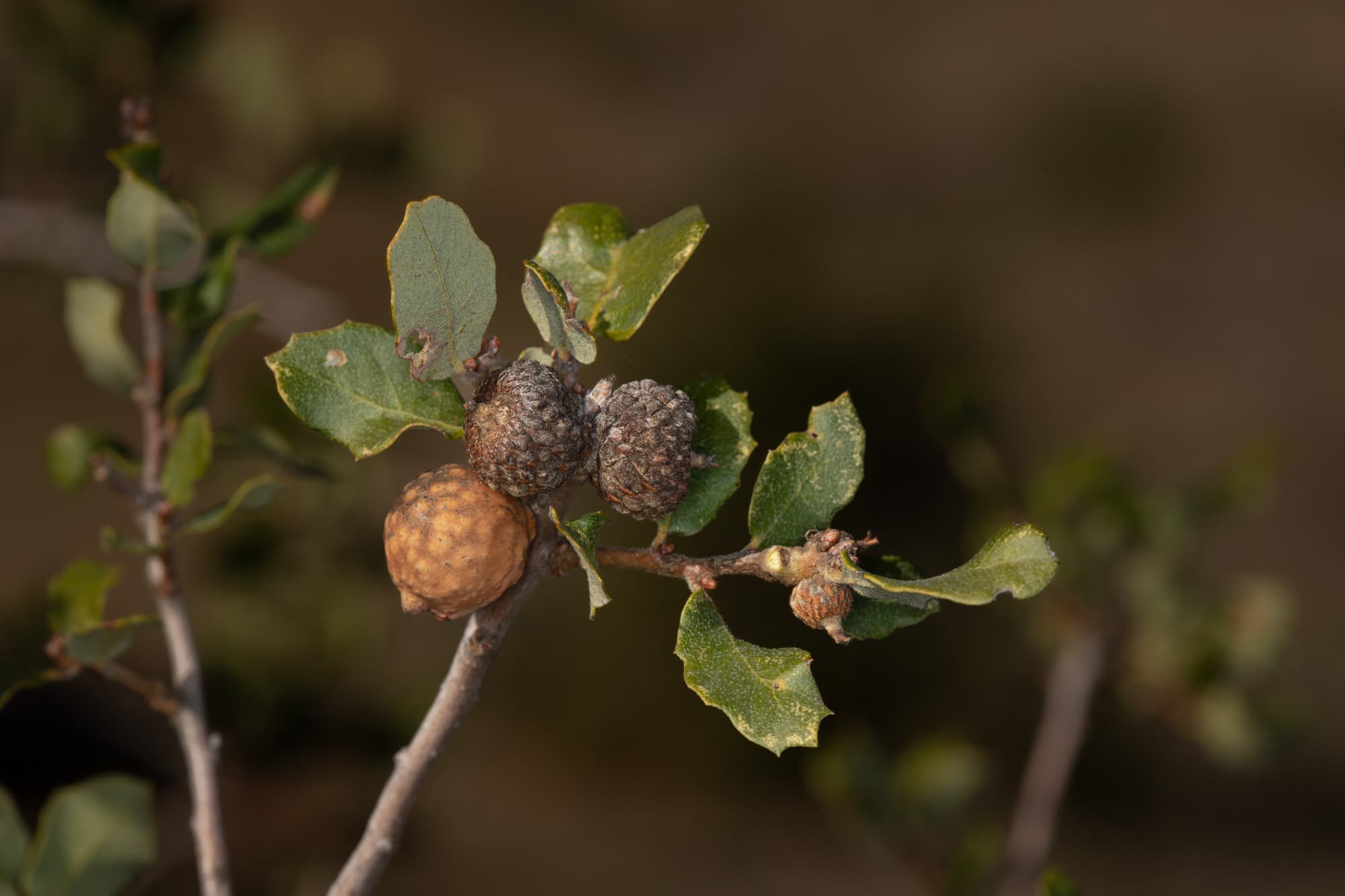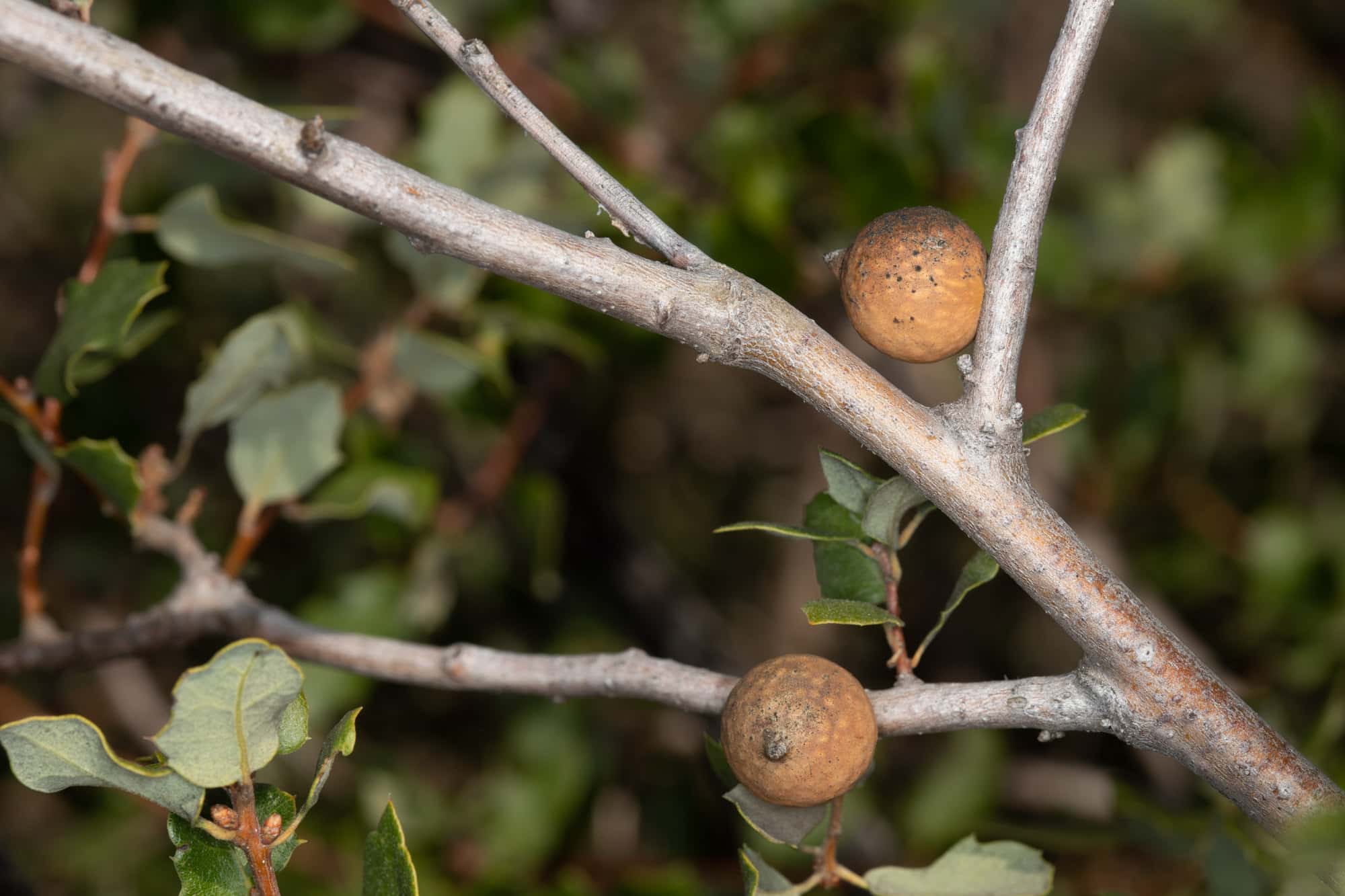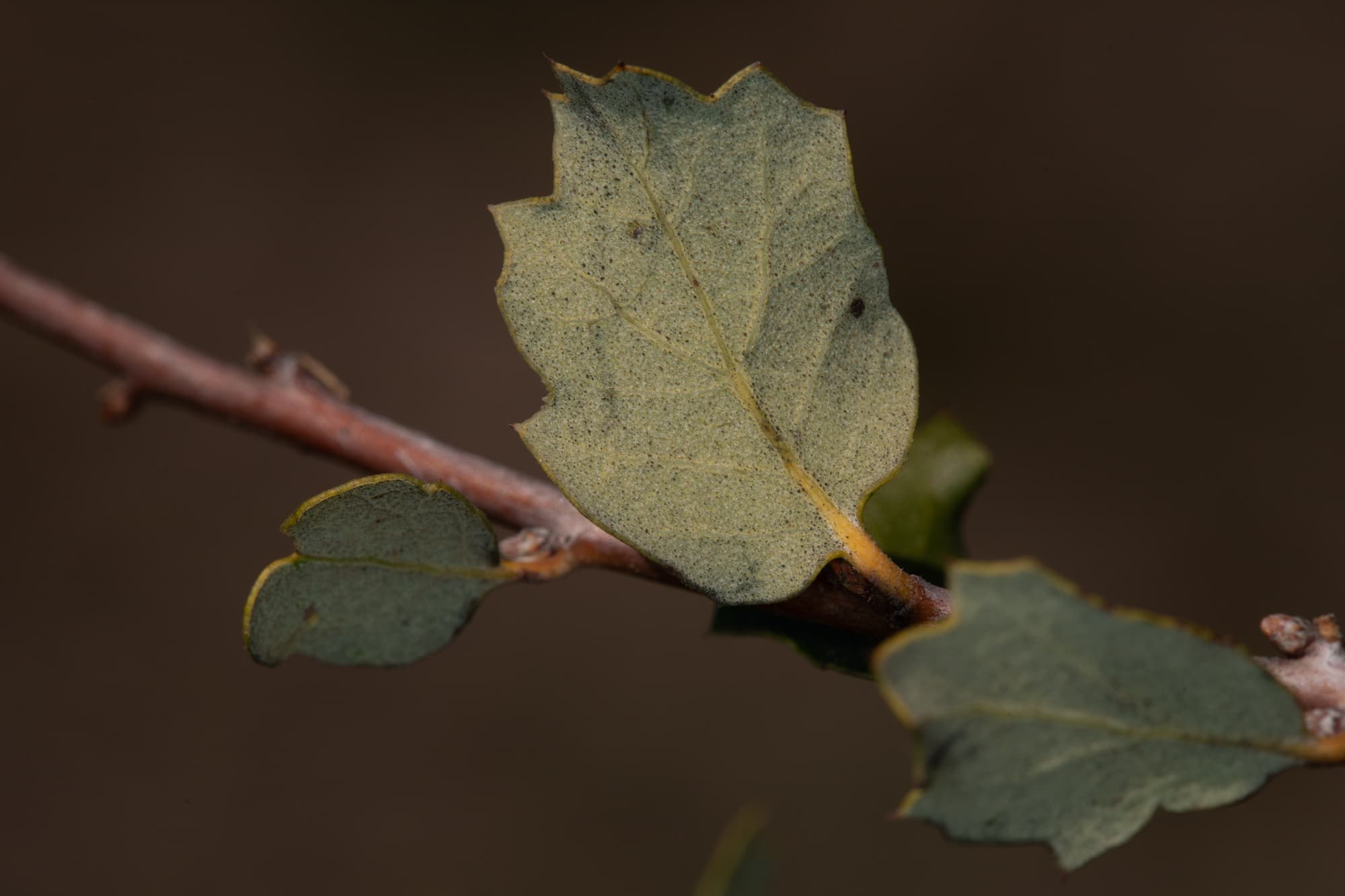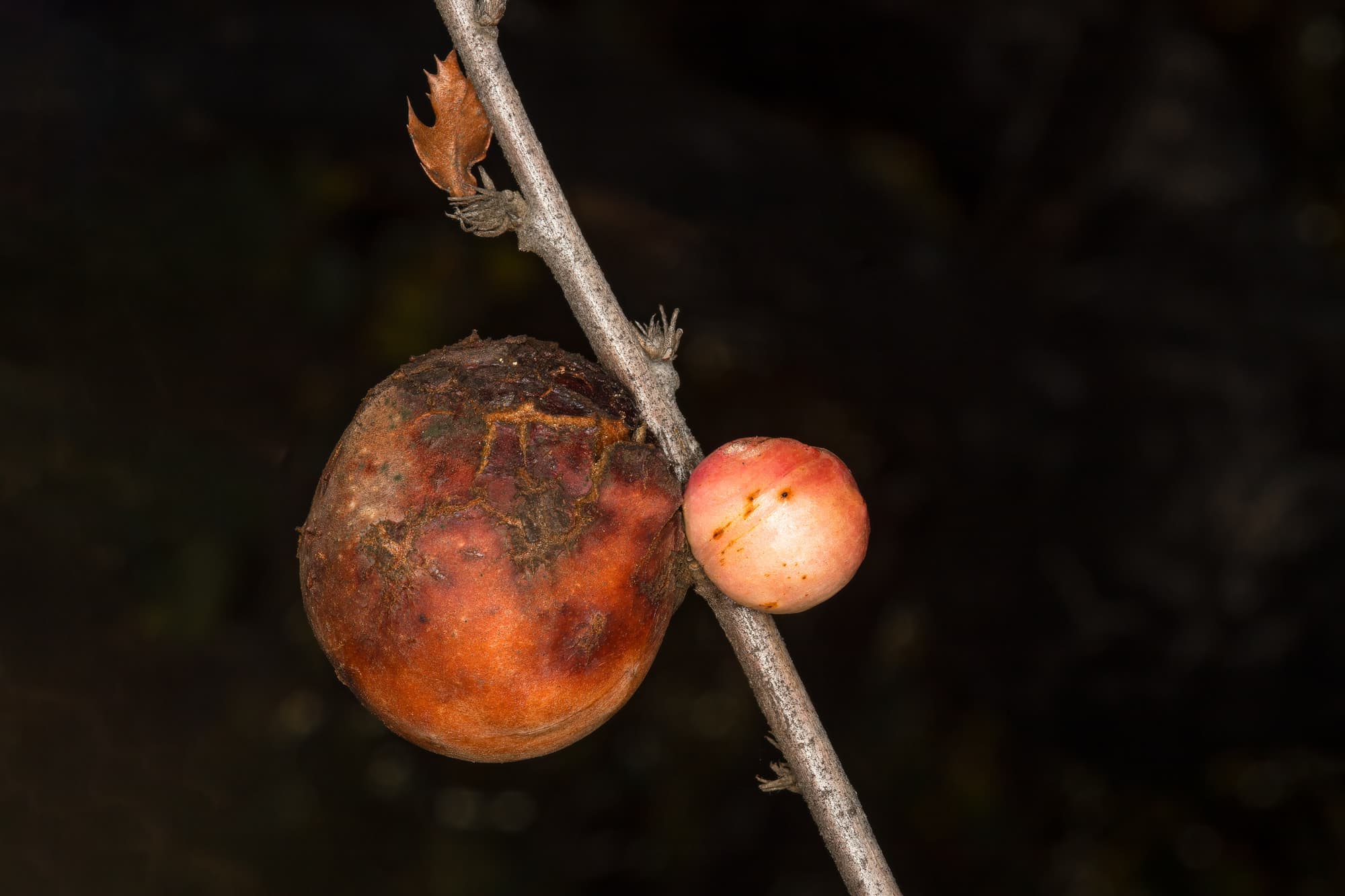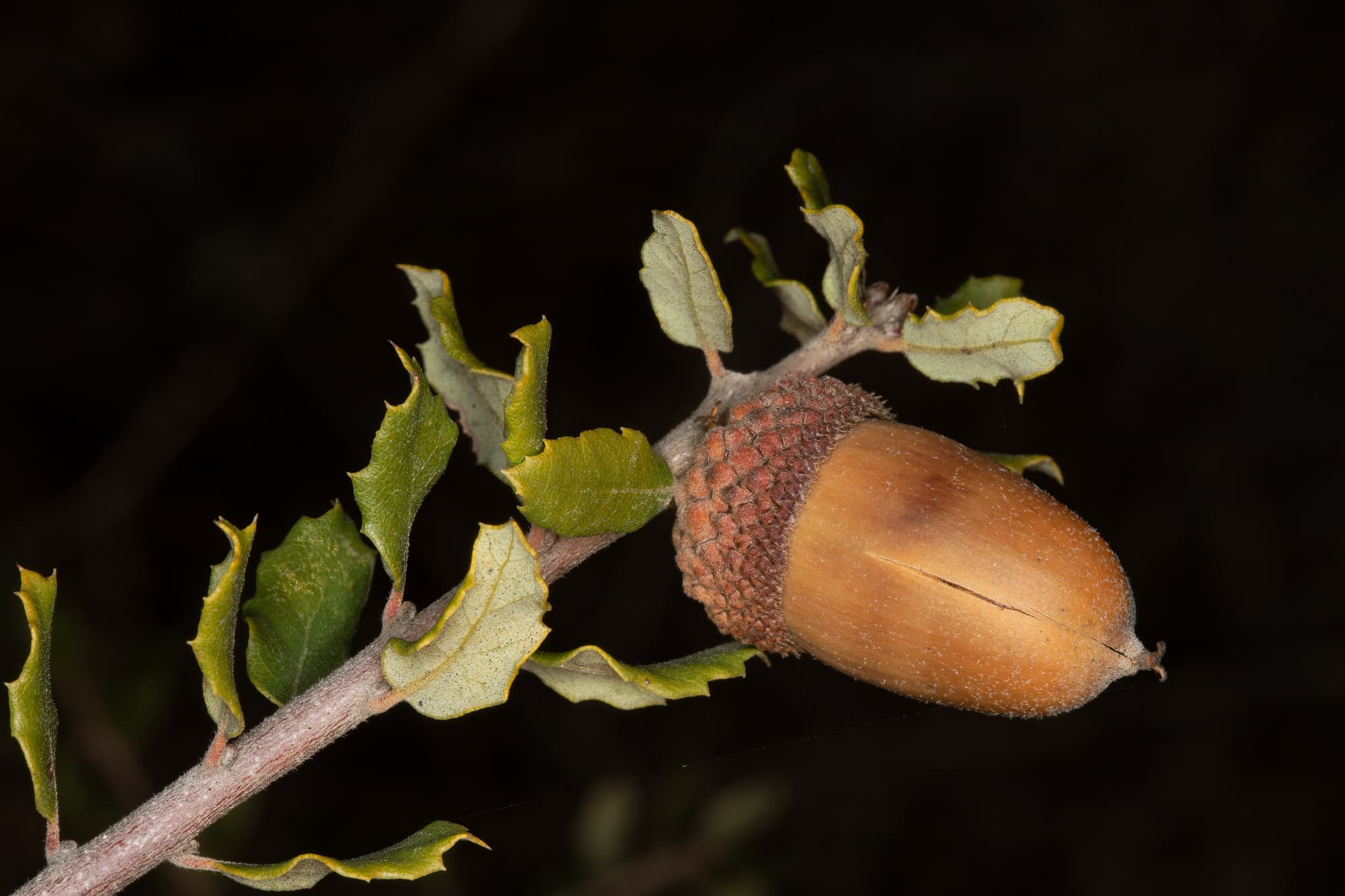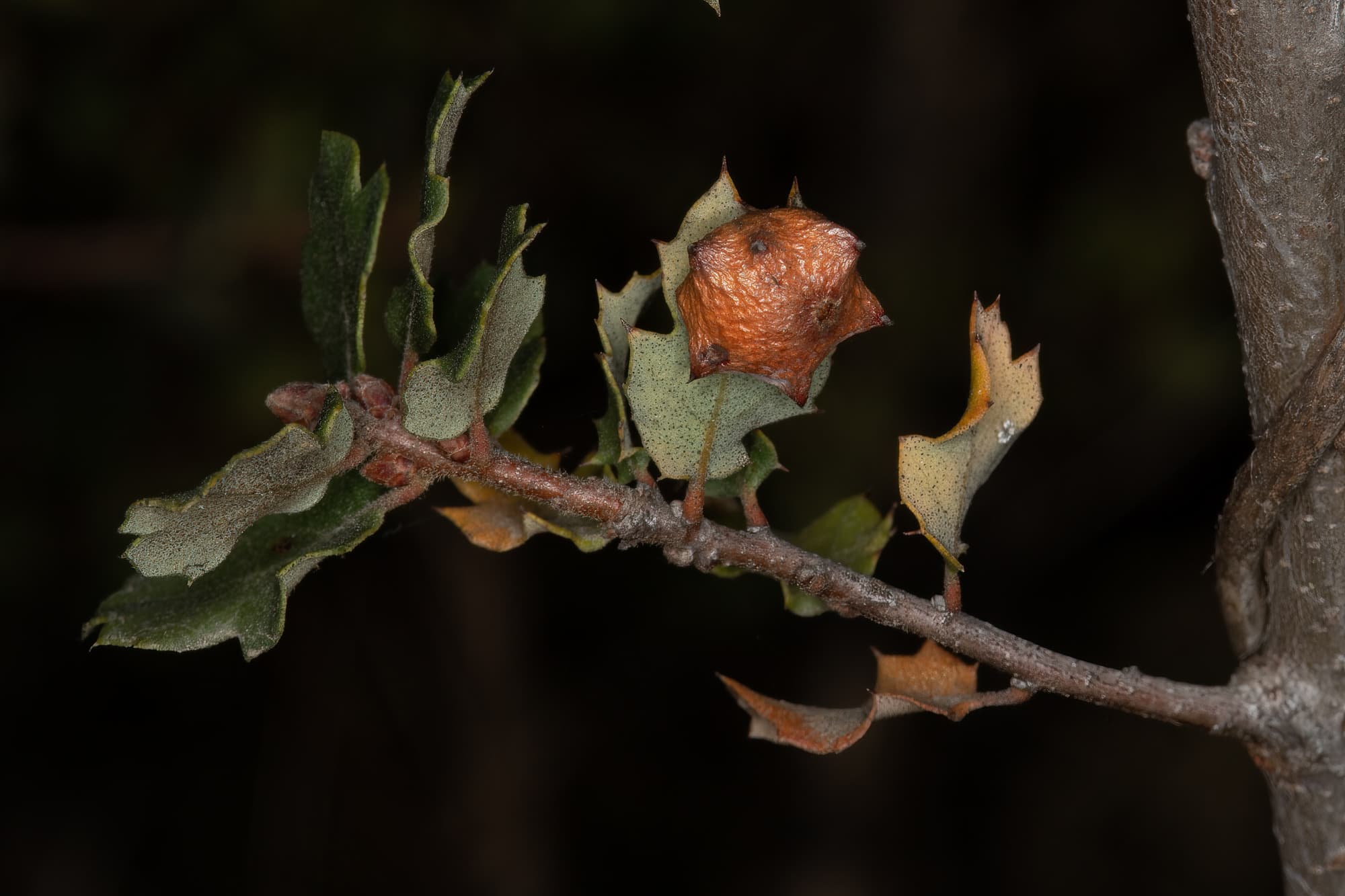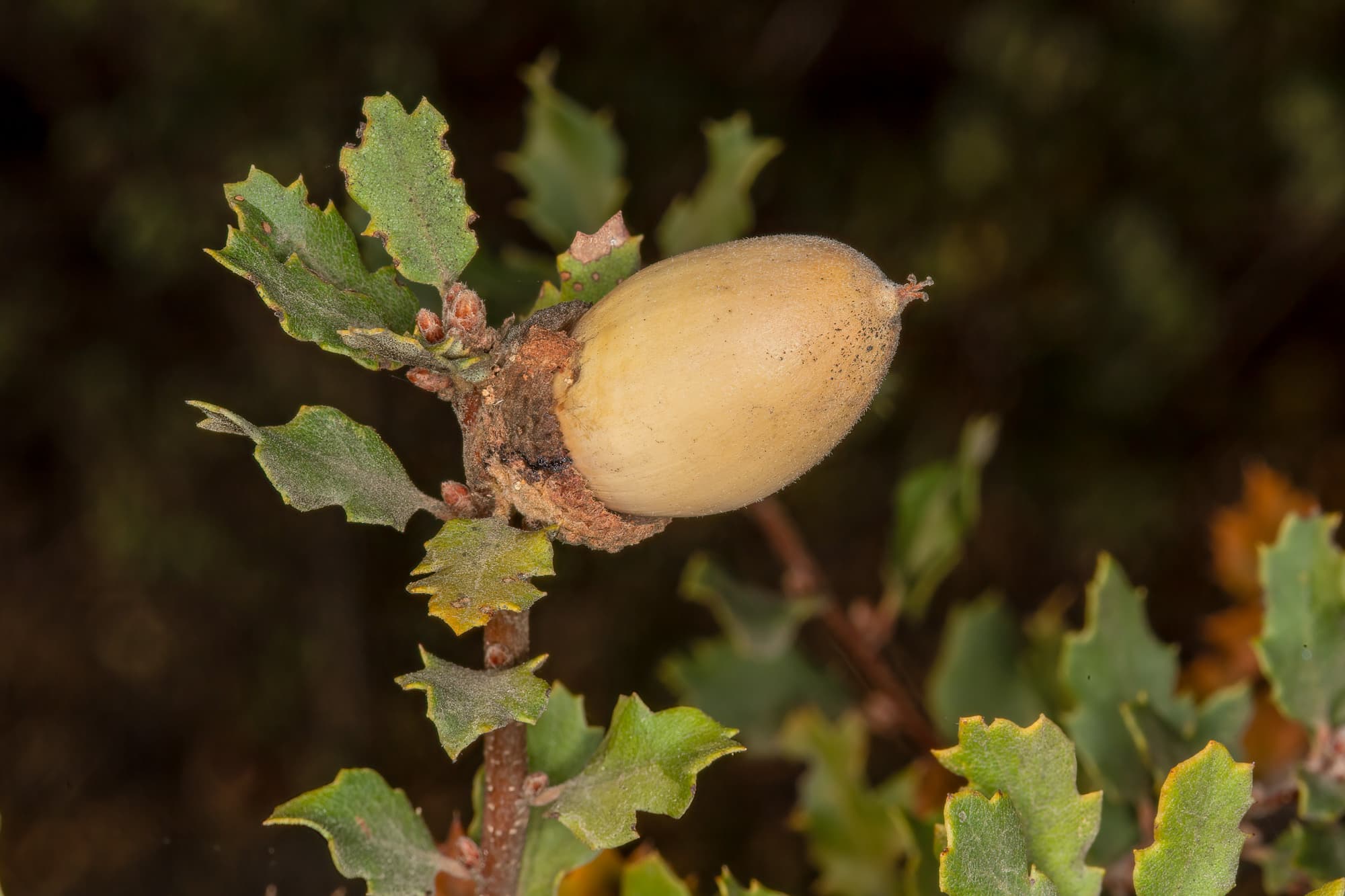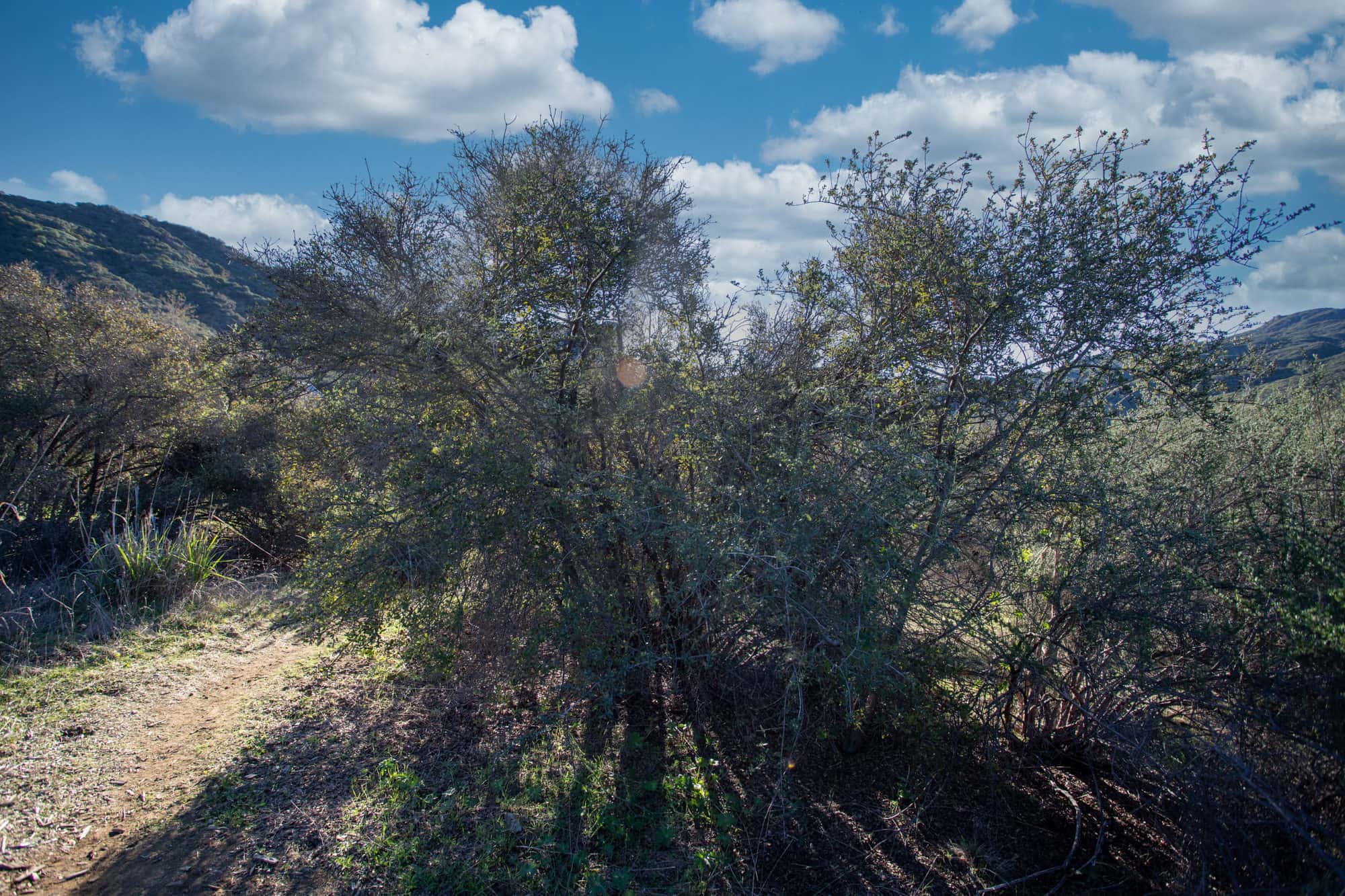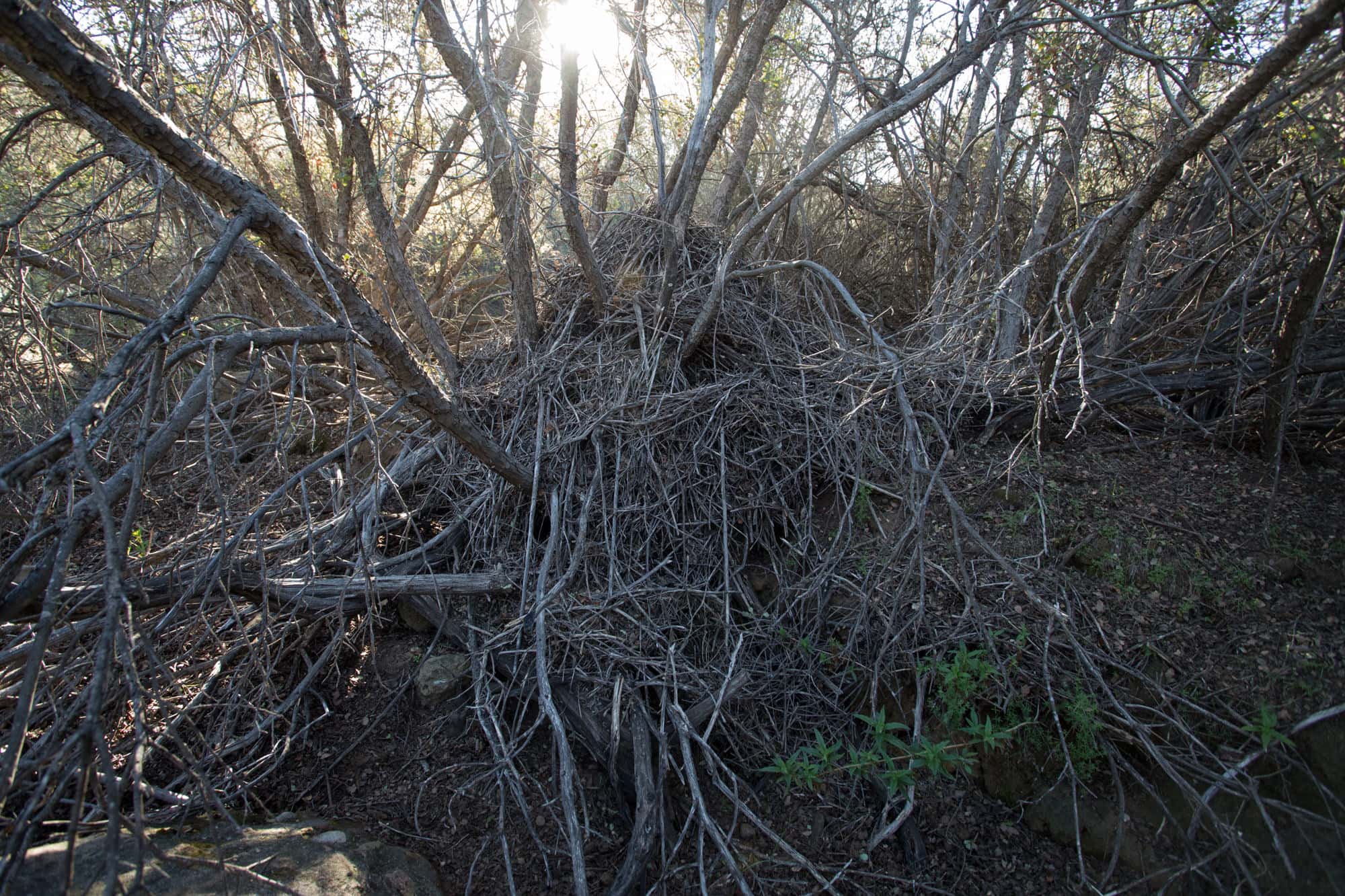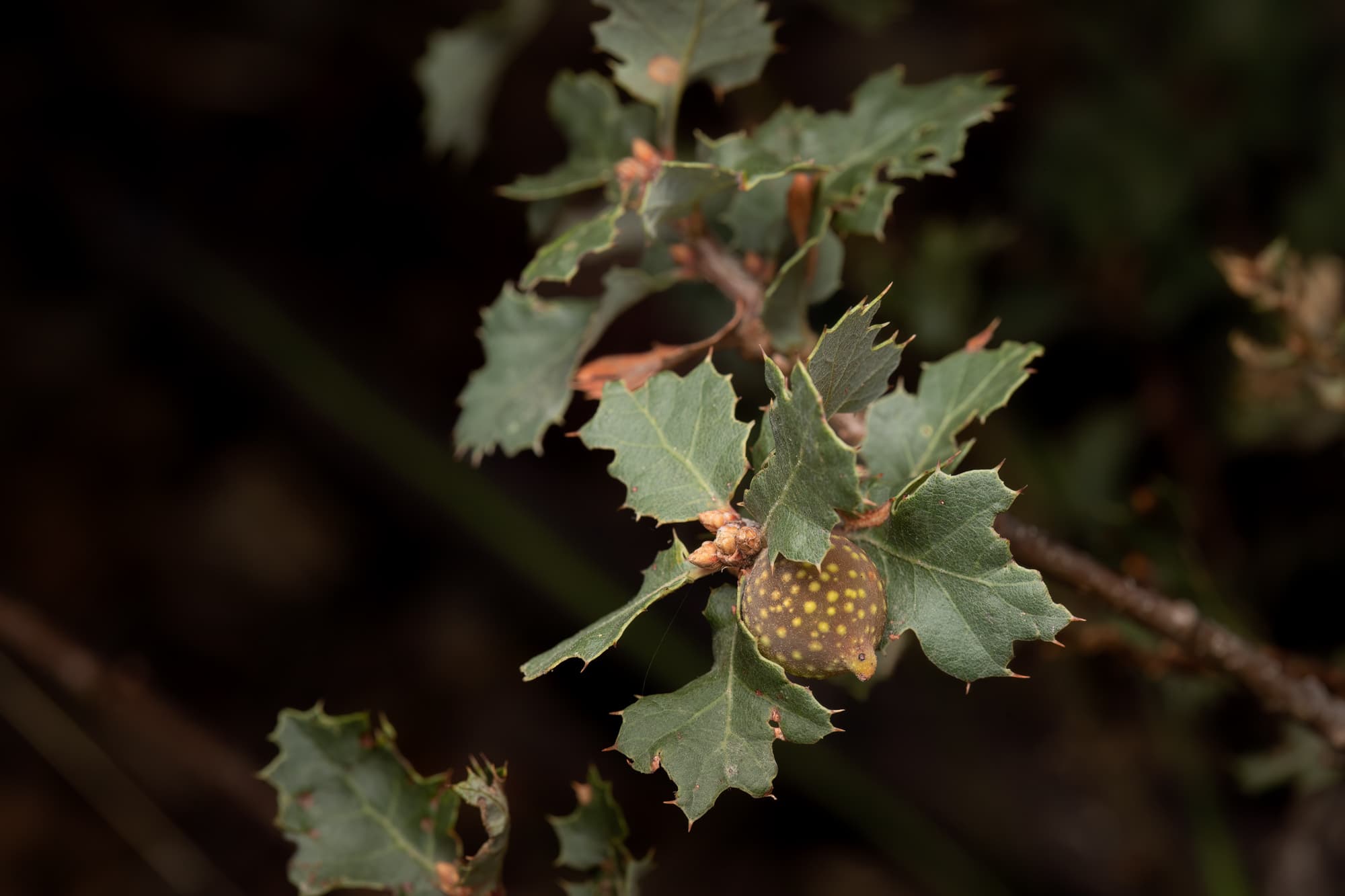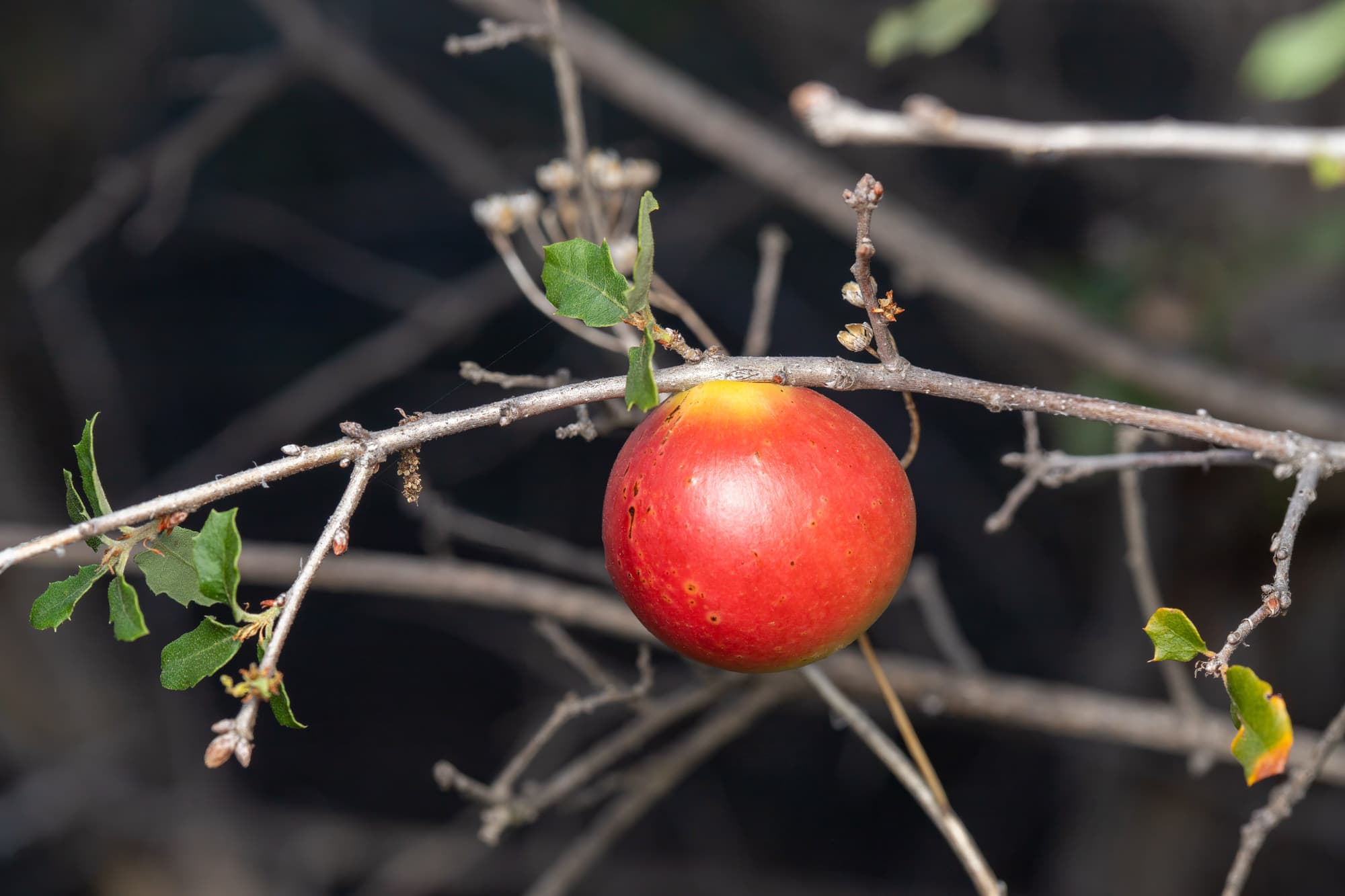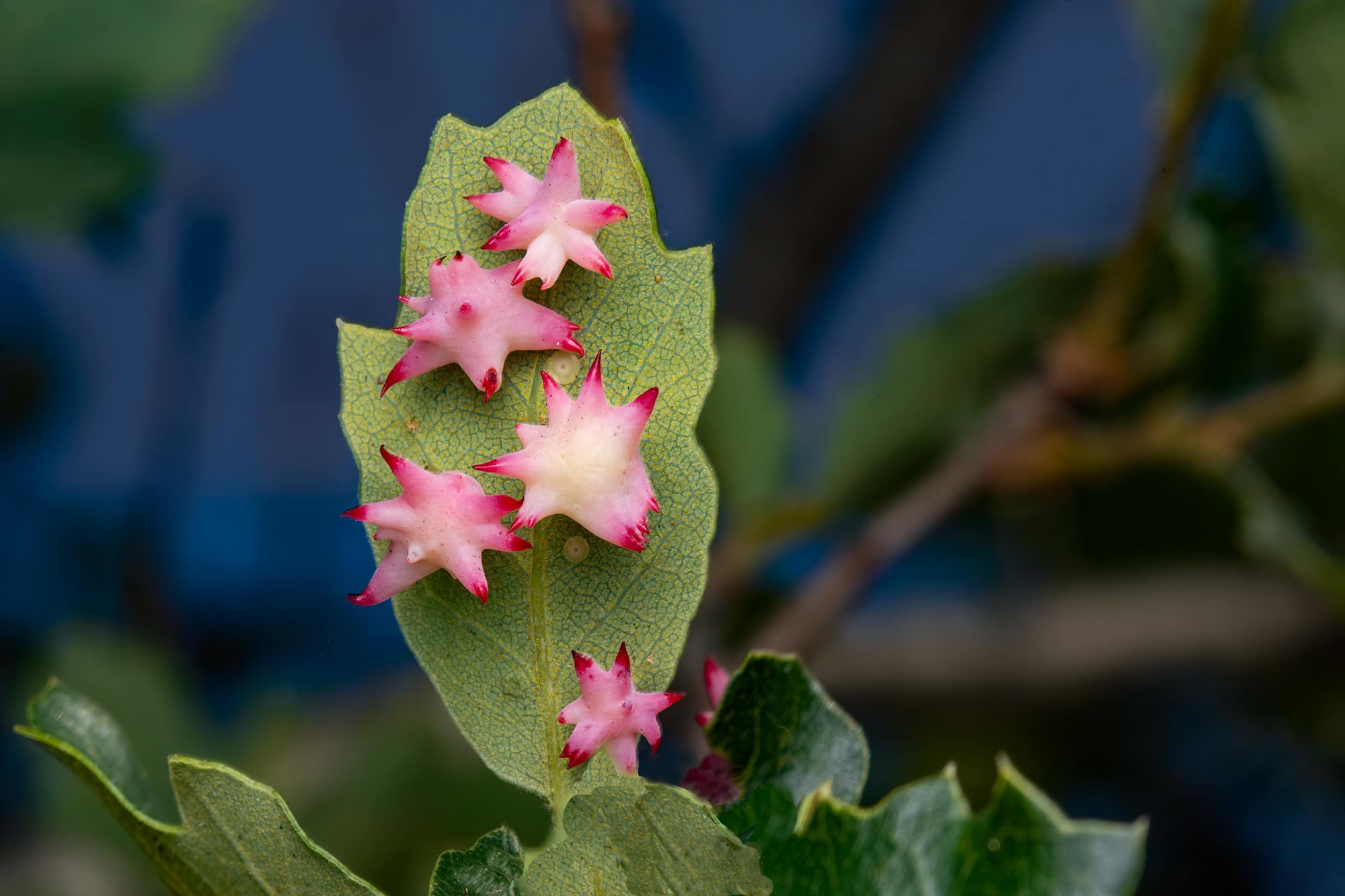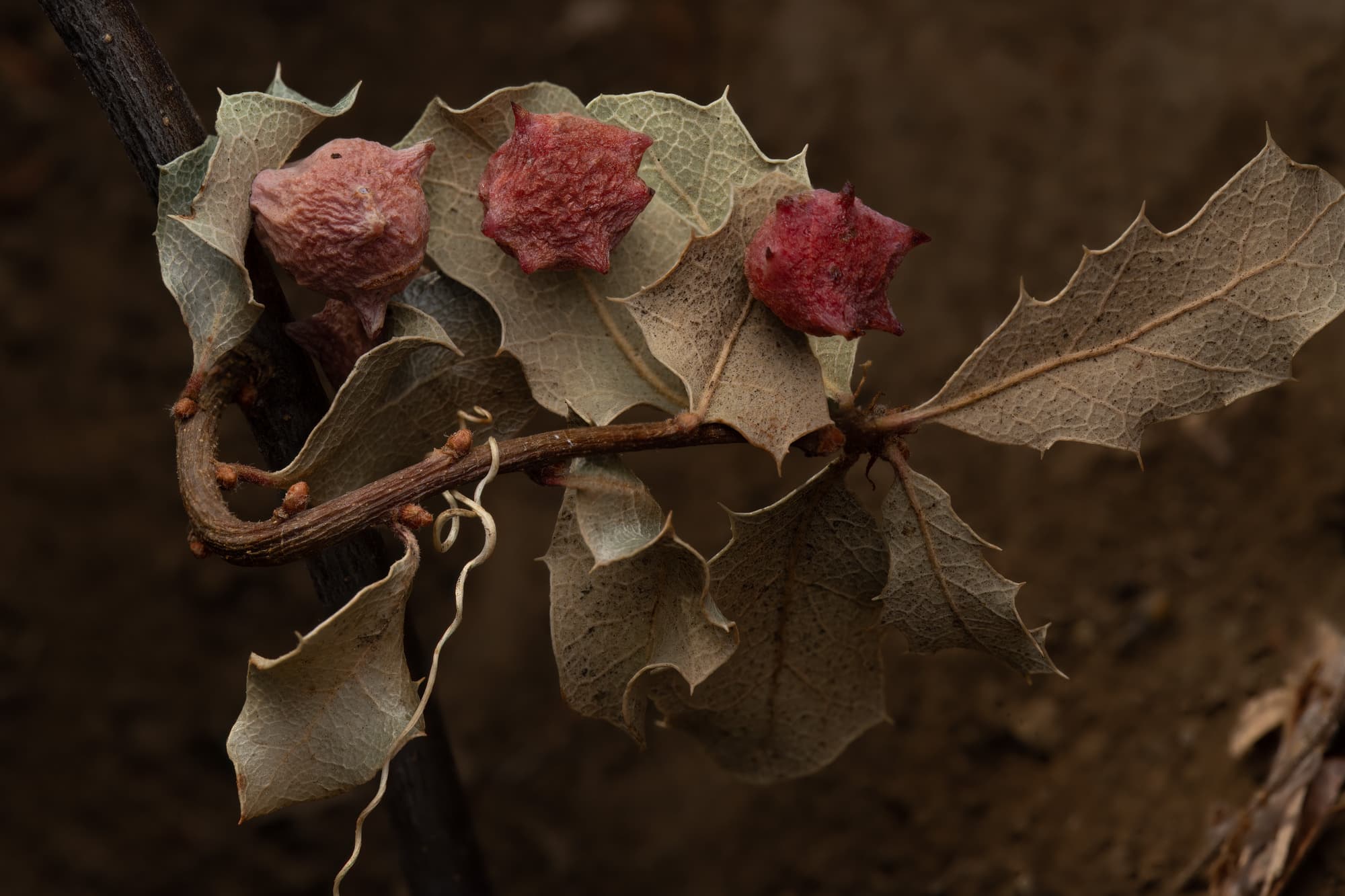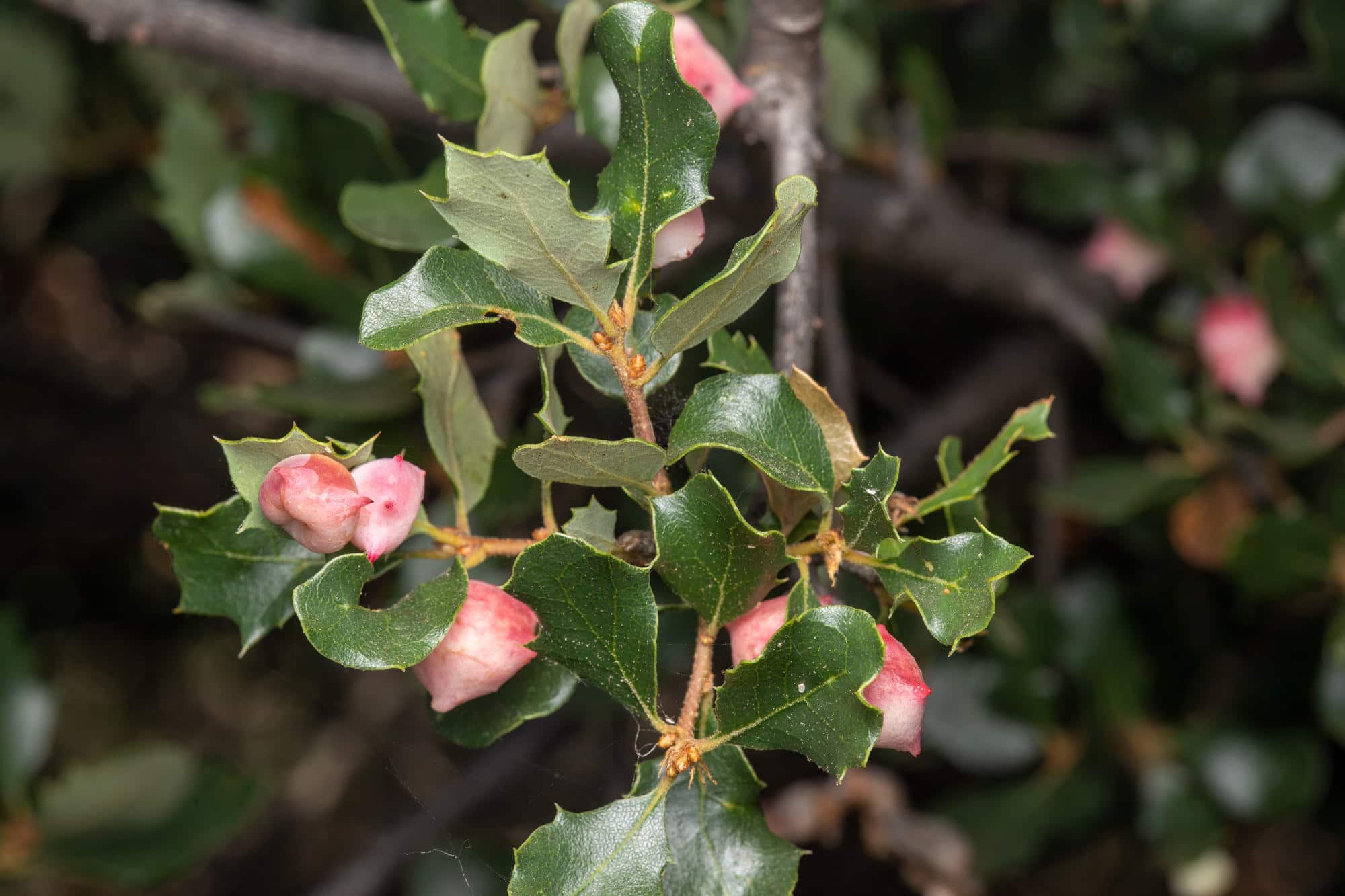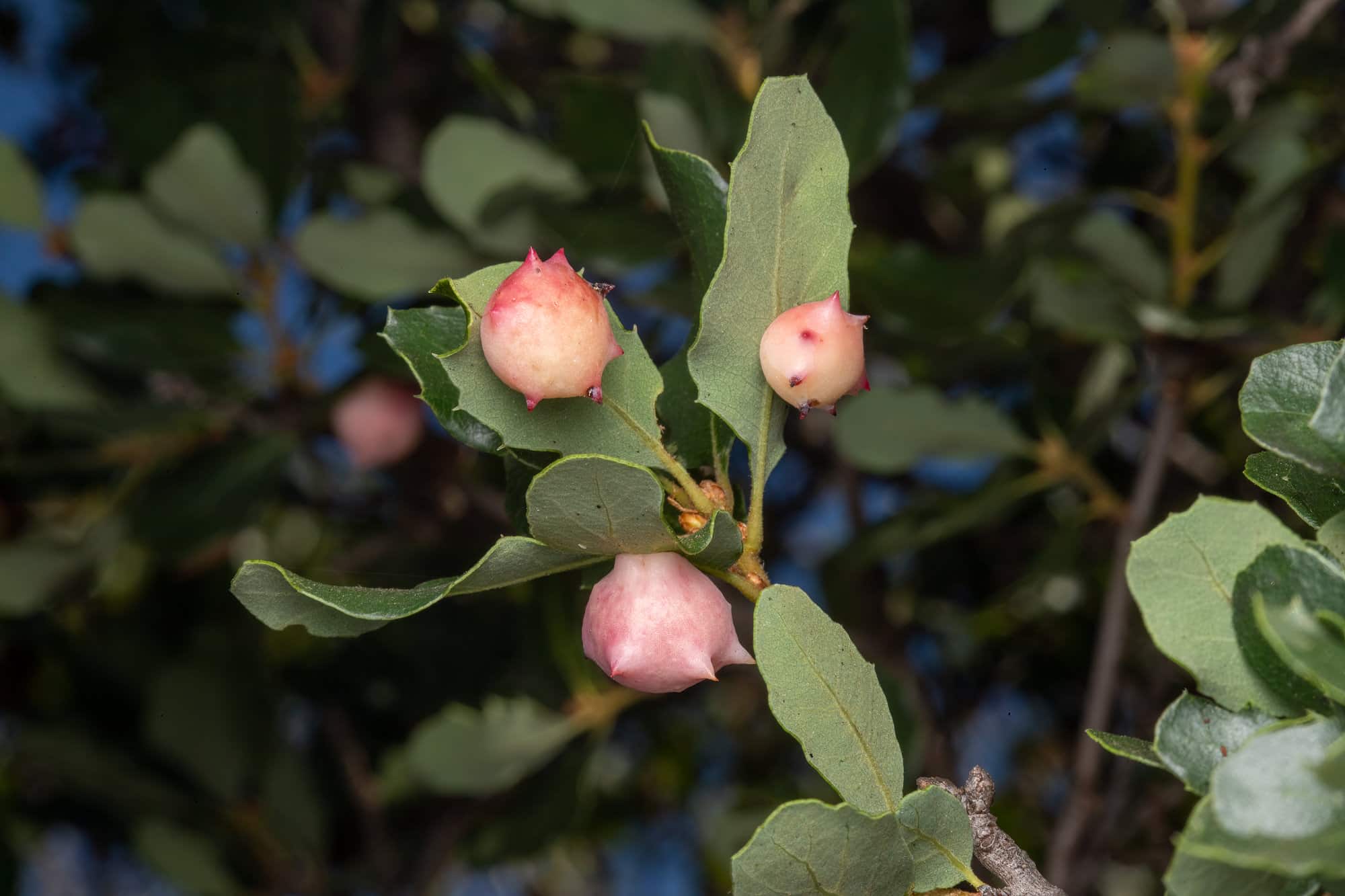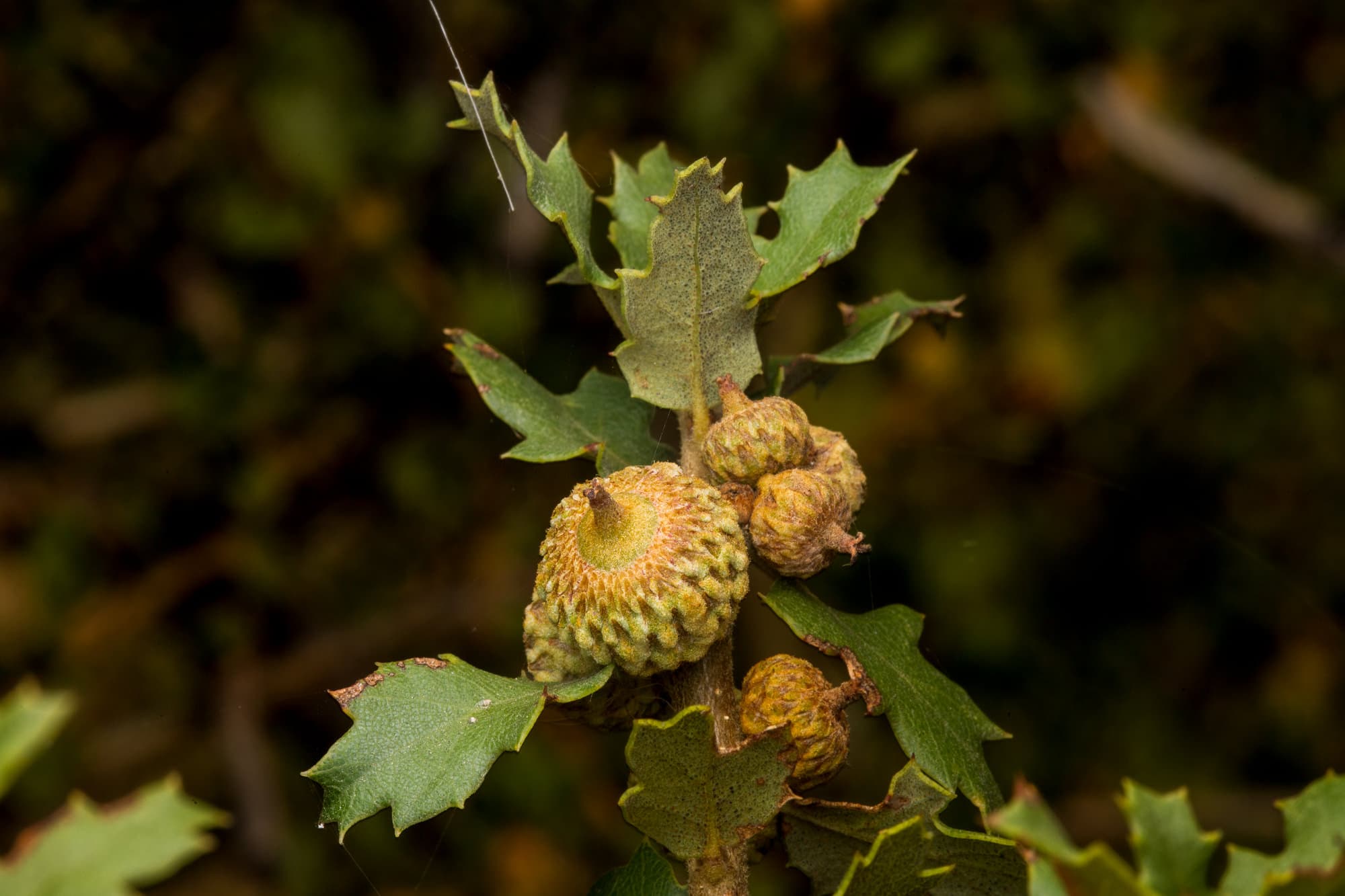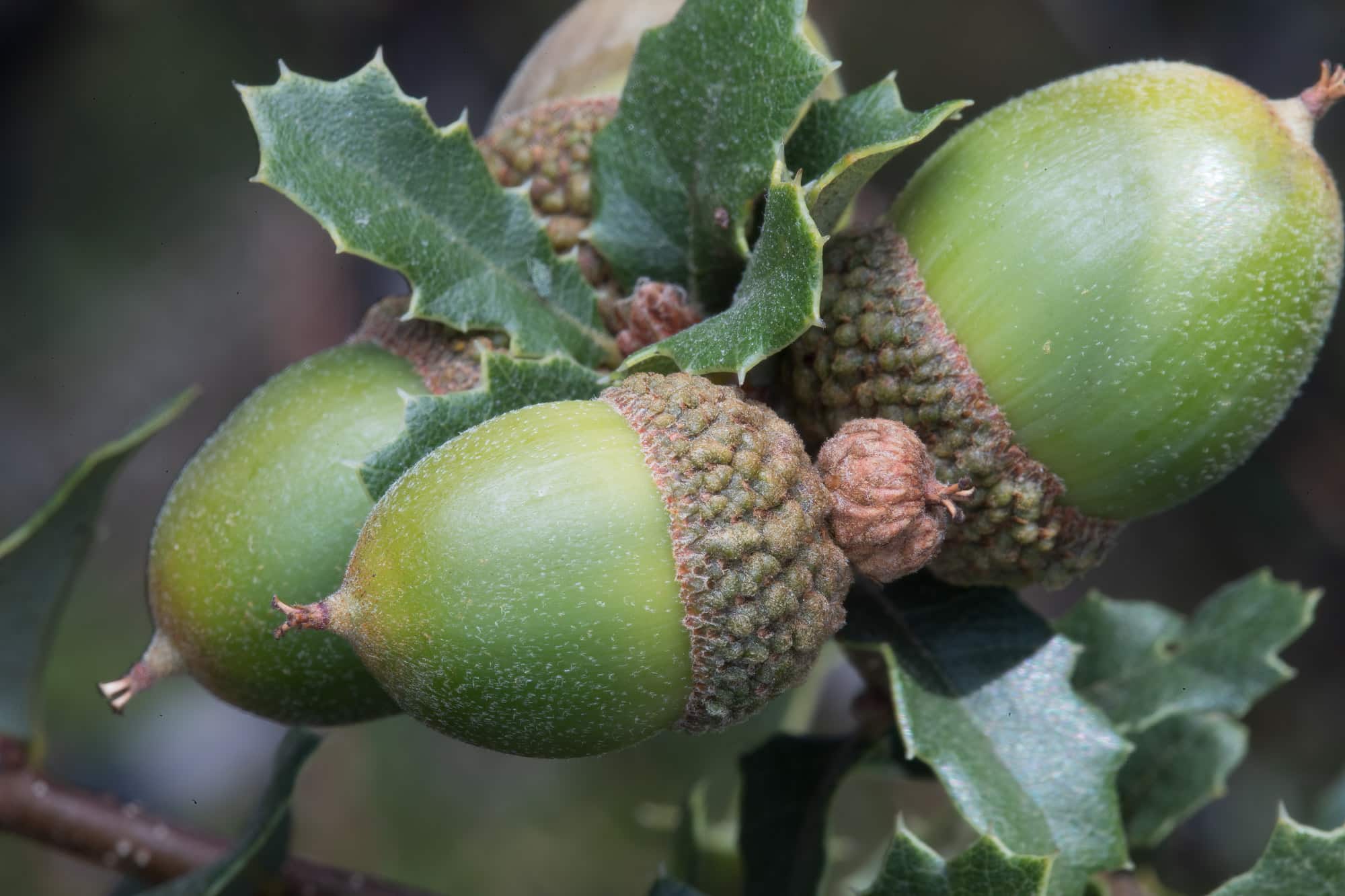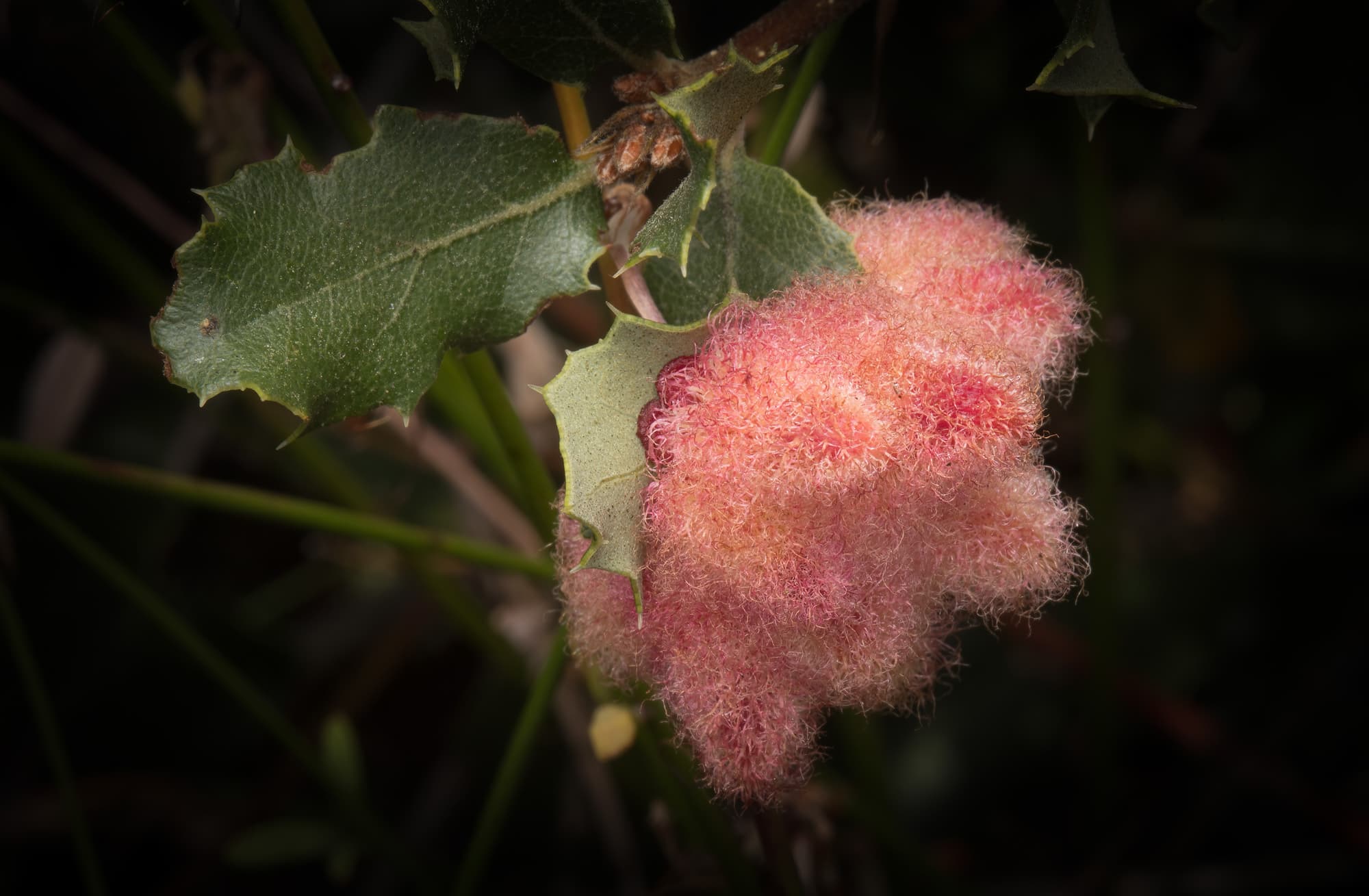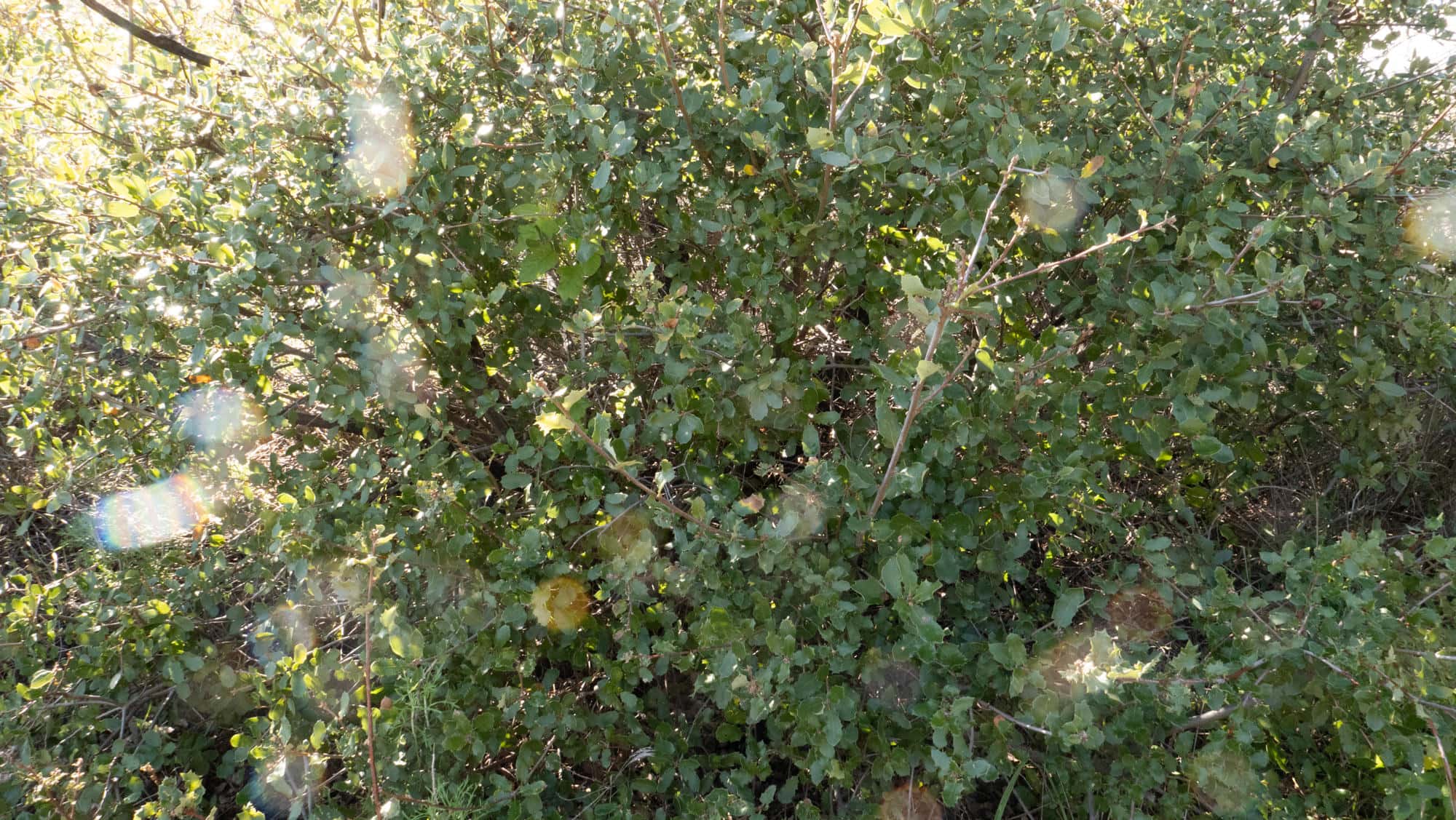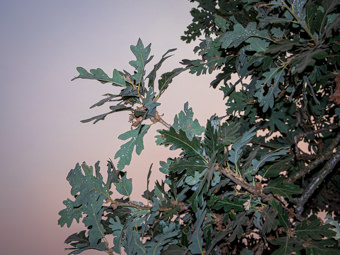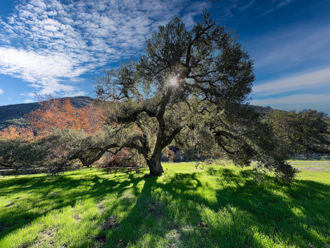Scrub Oak
- Quercus berberidifolia
| Common Name(s): | Scrub Oak |
| Scientific Name: | Quercus berberidifolia |
| Family: | Fagaceae (Beech) |
| Plant Type: | Shrub or Tree |
| Size: | Up to 15 |
| Habitat: | Coastal Sage |
| Blooms: | March to May |
| Fire Response: | Stump Sprout or Seed |
How do you know a plant is common in a plant community? In this case the answer is only obvious if you the origin for the word chaparral is “chaparro”, a Spanish term for the place where scrub oaks grow or small evergreen oak. Chaps (leather protection for legs) is another word that has its origins associated with that phrase. Scrub Oak- Quercus berberidifolia can take several forms - most common as dense thickets and less frequent as small trees (topping out at 15 feet). On average, this oak grows no taller than about 9-10 feet (to 3 meters), but may exceed 15 feet under ideal conditions. Slightly wider than tall: regularly 15-20 feet wide. It has light green-gray to gray, smooth bark. The foliage is dense enough that you will not accidentally try to make your way through it.
Highly adaptable, this plant responds well to the variable amounts of rainfall and sunlight it receives in a given year. Roots of this plant often extend deep underground in search of water. Most of our oaks (live oak and valley oak) have a single trunk. Scrub oaks usually have several trunks growing from a root system designed to survive summer drought and fire.
Leaves on scrub oak can vary depending on local conditions. Spiny, occasionally with a lobe like appearance the leave are flat to cup-like with a dark green top side paired with a dull gray underside. During extended drought conditions, the plants may drop leaves. New leaves appear in the spring and eventually replace older leaves. With a continued cycle of new leaves replacing older leaves - take a look under the plant and observe how deep the leaf litter is. This leaf litter provides a desirable environment for other creatures.
Tens of thousands of scrub oak flowers appear on each plant in the spring. The flowers are considered monoecious - separate male and female flowers on the same plant. You are going to have to work to find the female flowers as they are easily out-numbered by the male flowers - often referred to as “Catkins”. Female flowers are typically hidden by the leaves. Wind pollination is the order of the day for this plant.
Like nearly everything else on the plant, acorns are variable in shape and size. The acorns mature in the same year they appear. One way to identify this plant is that the acorn cups usually remain after the acorns are dropped.
If you are paying attention when you observe this plant, you may see a variety of galls caused by several different species of wasps. These galls are caused by female wasps piercing leaf or stem and depositing eggs. The chemical reaction causes the oak to grow a protective cover around the eggs - which provides a home for larvae. Amazingly this does not harm the plant and the tannins produced during the process protect the emerging life and the oak as well.
Fire Response: this plant can sprout from the stumper grow from acorns. Look carefully at the trunks emerging from the ground - some oaks have root systems that have been working for hundreds of years supporting trunks that may range in age from a few years to 60 years or more.
Link to Calflora.net - the best source of this fascinating information.
Name Origin: Quercus: the classical Latin name for the oak from Roman times, interestingly no certain derivation for the name, possibly from the Celtic quer, "fine," and cuez, "tree."
berberidifolia: with leaves like those of Berberis, the barberry.
Contributed by George Sherman
Featured Plants in the Fagaceae (Beech) Family:
Last modified: August 21 2024 15:19:02.
Number of Images: 20
Image Size Total: 3,275,163
References:
Wildflowers of the Santa Monica Mountains, by Milt McAuleyFlowering Plants: The Santa Monica Mountains, Coastal and Chaparral Regions of Southern California, by Nancy Dale
Chumash Ethnobotany: Plant Knowledge Among the Chumash People, by Jan Timbrook
Leaf Shapes Primer - Botanical Terms for Leaves: - Link

